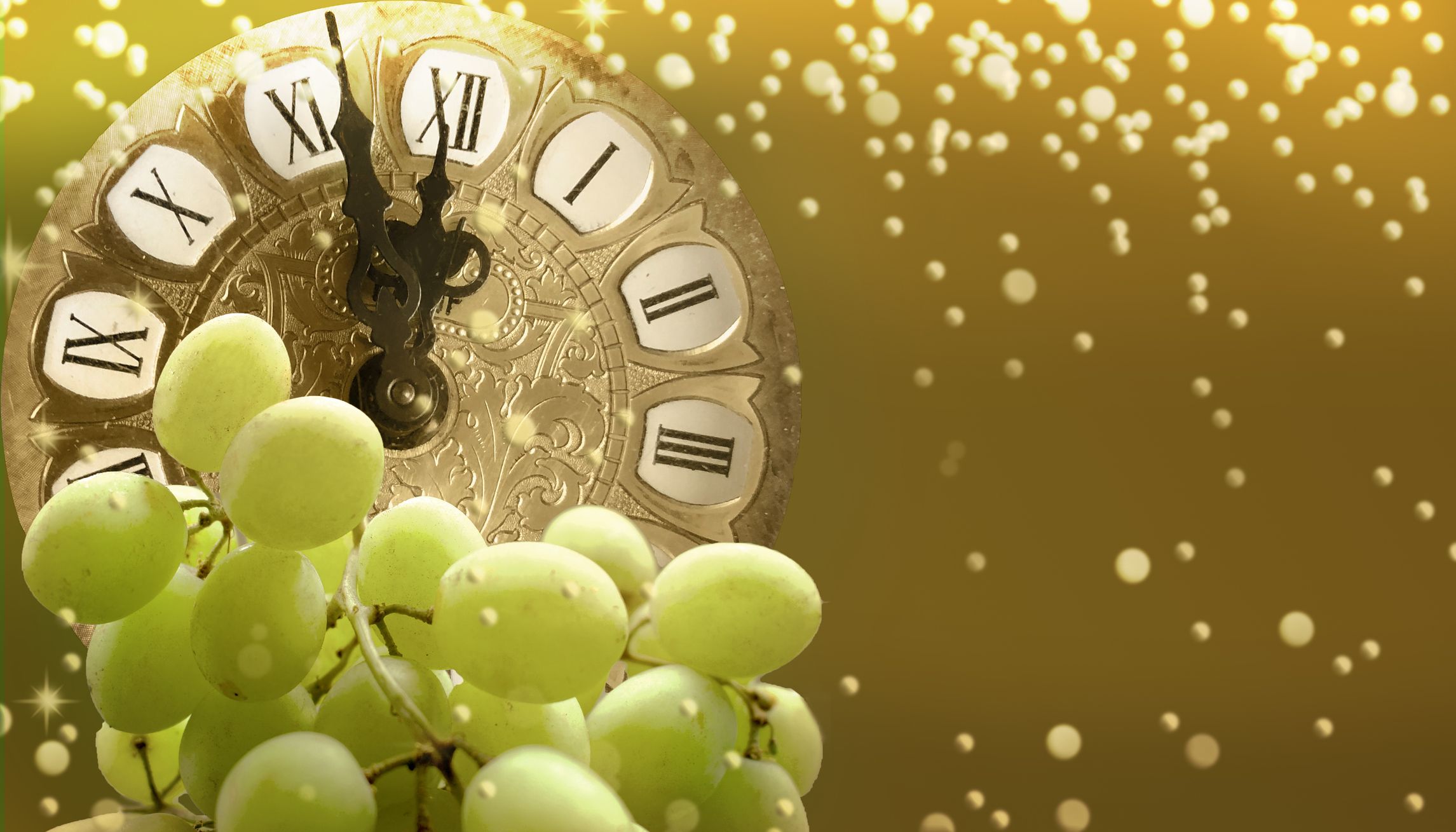World Updates | Update information about politics and social around the world
Celebrate The Magical Arrival Of The New Year With Uvas Nochevieja: A Culinary Tradition From Spain
Celebrate The Magical Arrival Of The New Year With Uvas Nochevieja: A Culinary Tradition From Spain
nochevieja puerta del sol doce uvas madrid spain 2013 | Hostal Madrid - Source hostalhorizonte.com
Editor's Notes: "Celebrate The Magical Arrival Of The New Year With Uvas Nochevieja: A Culinary Tradition From Spain" have published today
The arrival of the New Year is a time for celebration and festivities around the world. In Spain, one of the most popular traditions is eating 12 uvas (grapes) at midnight on New Year's Eve. This tradition is known as "Uvas Nochevieja" and is believed to bring good luck and prosperity in the coming year.
The tradition of eating uvas on New Year's Eve is thought to have originated in the 19th century. At that time, grapes were a luxury item in Spain and were only available to the wealthy. However, in 1895, there was a bumper grape harvest and grapes became more affordable. To celebrate, people began eating grapes at midnight on New Year's Eve as a symbol of good luck and prosperity.
Today, Uvas Nochevieja is a popular tradition all over Spain. At midnight on New Year's Eve, people gather in their homes or in public squares to eat their 12 uvas. The grapes are typically eaten one by one, with each grape representing a month of the coming year. As the grapes are eaten, people make wishes for the future.
In addition to bringing good luck, Uvas Nochevieja is also believed to have other benefits. The grapes are a good source of antioxidants and vitamins, and they are also believed to help with digestion.
If you are looking for a fun and festive way to celebrate the arrival of the New Year, Uvas Nochevieja is a great tradition to try. Just be sure to have your 12 uvas ready to eat at midnight!
FAQs
This FAQ section provides detailed answers to common questions and concerns regarding the Uvas Nochevieja tradition from Spain.

Trucos para escoger las mejores uvas en Nochevieja: así debes - Source www.businessinsider.es
Question 1: What is the significance of Uvas Nochevieja?
Uvas Nochevieja is a Spanish tradition observed during the New Year's Eve celebration. It involves eating twelve grapes, each representing a month of the upcoming year, as the clock strikes midnight.
Question 2: How are the grapes eaten during Uvas Nochevieja?
The grapes are typically arranged in sets of twelve on a plate or in individual cups. As each chime of the clock rings at midnight, one grape is eaten to symbolize a wish for the corresponding month.
Question 3: What is the origin of the Uvas Nochevieja tradition?
The exact origin of the tradition is unclear, but it is believed to have originated in the late 19th century in Spain. Some theories suggest it may have been influenced by similar practices in other cultures or as a way to promote grape consumption.
Question 4: Are there any specific varieties of grapes used for Uvas Nochevieja?
Traditionally, small, seedless grapes are preferred for this tradition. Varieties such as Aledo, Moscatel, and Cardinal are commonly used in Spain.
Question 5: Do the grapes represent any particular wishes or intentions?
While the tradition itself does not prescribe specific wishes, many people associate each grape with a wish for good luck, prosperity, or a desired outcome in the corresponding month.
Question 6: Is Uvas Nochevieja a widely observed tradition outside of Spain?
The tradition has gained popularity in other Spanish-speaking countries and in some parts of Latin America. It is also observed by Spanish communities or individuals living in various parts of the world.
In summary, the Uvas Nochevieja tradition is a unique and cherished custom in Spanish culture, symbolizing hope, good fortune, and the anticipation of the New Year.
Now that you have a better understanding of this tradition, continue reading to learn more about its cultural significance and how it is celebrated.
Tips to Celebrate Nochevieja with Uvas
The Spanish New Year's Eve tradition of eating 12 grapes at midnight is a fun way to bring in the New Year with a bit of luck and good fortune. Here are a few tips to make sure your Uvas Nochevieja celebration is a success:

Cómo presentar las uvas en Nochevieja y arrasar - ALDI - Source www.aldi.es
Tip 1: Choose seedless grapes.
This may seem like an obvious tip, but there's nothing worse than trying to eat a grape and getting a mouthful of seeds. Seedless grapes are much easier to eat, and you'll be able to focus on enjoying the flavor and the tradition without having to worry about spitting out seeds.
Tip 2: Have a glass of champagne or sparkling wine ready.
A glass of bubbly is the perfect accompaniment to your grapes. It will help you ring in the New Year in style and add to the festive atmosphere.
Tip 3: Make sure you have 12 grapes for each person.
This is important because you're supposed to eat one grape for each chime of the clock at midnight. If you don't have enough grapes, you'll be left with some unlucky people at the end of the night.
Tip 4: Start eating your grapes as soon as the clock starts to chime.
This is said to bring you good luck and prosperity in the New Year. If you can manage to eat all 12 grapes before the last chime, you're in for a especially lucky year.
Tip 5: Make a wish as you eat each grape.
This is a fun way to add some personal meaning to the tradition. As you eat each grape, think of a wish for the New Year and say it aloud. Who knows, maybe your wishes will come true!
Following these tips will help you make sure your Uvas Nochevieja celebration is a success. So gather your friends and family, get some grapes, and get ready to ring in the New Year with a bit of Spanish tradition.
Celebrate The Magical Arrival Of The New Year With Uvas Nochevieja: A Culinary Tradition From Spain
Celebrate The Magical Arrival Of The New Year With Uvas Nochevieja: A Culinary Tradition From Spain
The enchanting tradition of Uvas Nochevieja, rooted in Spanish culture, brings a magical charm to the New Year celebrations. This culinary ritual involves savoring 12 grapes at the stroke of midnight, embodying wishes for the upcoming year.

¿Por qué tomamos 12 uvas en Nochevieja? - Azlo - Source www.azlo.es
- Symbolism: Each succulent grape represents a month of the new year.
- Luck: Consuming the grapes during the 12 chimes is believed to bring good fortune for the year ahead.
- Unity: The shared experience fosters a sense of togetherness as families and friends gather to partake in this ritual.
- Cultural Significance: This tradition is deeply embedded in Spanish heritage, passed down through generations.
- Preparation: Prior to midnight, meticulous preparation ensures 12 perfect grapes for each participant.
- Countdown: With the countdown to midnight, anticipation builds as the grapes are held in readiness.
The ritual of Uvas Nochevieja extends beyond symbolism, fostering a sense of unity and joyful anticipation as the new year unfolds. It serves as a reminder of the rich cultural heritage that defines the Spanish people and adds a touch of magic to the transition into a new chapter of life.

La tradición de tomar 12 uvas en Nochevieja - Blog Emagister - Source www.emagister.com
Celebrate The Magical Arrival Of The New Year With Uvas Nochevieja: A Culinary Tradition From Spain
Uvas Nochevieja, a time-honored Spanish tradition, holds a deep connection to the magical arrival of the New Year. This culinary practice involves eating 12 grapes, one at each chime of the clock as it strikes midnight on December 31st, a ritual believed to bring good luck and prosperity for the coming year. Each grape symbolizes a month of the year, inviting positive intentions and aspirations for the 12 months ahead.

Uvas New Year Stock Photos - Free & Royalty-Free Stock Photos from - Source www.dreamstime.com
The significance of Uvas Nochevieja goes beyond its symbolic act; it is a moment of shared joy and anticipation. Families and friends gather to partake in this ritual, creating a sense of unity and community. The tradition is steeped in cultural history, passed down through generations, and remains an integral part of Spanish New Year celebrations.
Practically, understanding this tradition provides insights into the cultural richness of Spain and the enduring power of culinary rituals. The act of eating 12 grapes at the stroke of midnight encapsulates the collective hopes and aspirations of a nation, reinforcing the belief in the transformative power of symbols and shared experiences.
In conclusion, Uvas Nochevieja serves as a potent symbol, deeply ingrained in Spanish culture. Its connection to the magical arrival of the New Year underscores the importance of traditions, shared experiences, and the enduring belief in the power of hope and prosperity. Understanding this tradition offers a glimpse into the cultural tapestry of Spain and the enduring significance of culinary rituals in shaping collective beliefs and aspirations.
